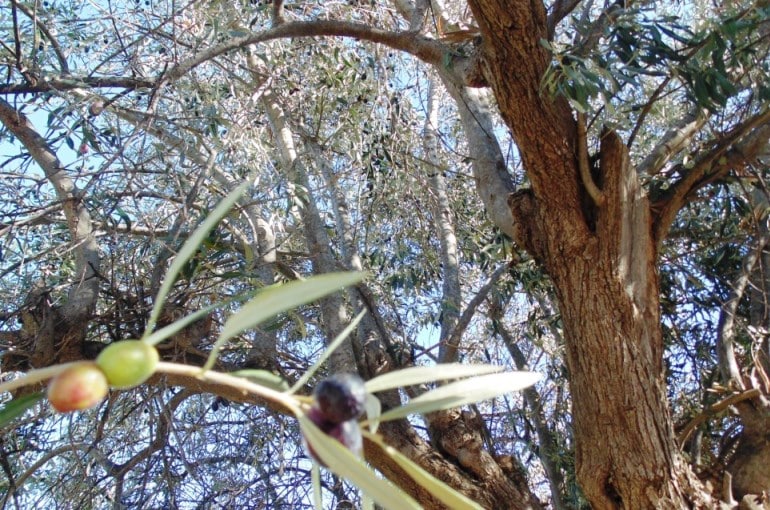Olive Tree Water Requirements

This post is also available in:
This post is also available in:
![]() Español (Spanish)
Español (Spanish) ![]() Français (French)
Français (French) ![]() Deutsch (German)
Deutsch (German) ![]() Nederlands (Dutch)
Nederlands (Dutch) ![]() العربية (Arabic)
العربية (Arabic) ![]() Türkçe (Turkish)
Türkçe (Turkish) ![]() 简体中文 (Chinese (Simplified))
简体中文 (Chinese (Simplified)) ![]() Italiano (Italian)
Italiano (Italian) ![]() Português (Portuguese (Brazil))
Português (Portuguese (Brazil)) ![]() polski (Polish)
polski (Polish)
How to irrigate Olive Trees – Olive Farm Irrigation Methods
The olive tree is resistant to drought, but responds greatly to the supply of water by any method. Well irrigated trees tend to produce higher yields, while the annoying phenomenon of Alternate Bearing can be mitigated through a rational and well-designed irrigation system. In general, olive trees that are cultivated for oil need less irrigation than those cultivated for table olives. Productive olive trees are irrigated (when needed) from the beginning of the growing season until the start of winter rainfalls, because lack of water can adversely affect the growth of vegetation, fruit set and development of fruit. In California, most olive farmers irrigate deeply their trees from May-June till harvest in a frequency ranging from once a week to once a month, assuming there are no rainfalls during this period. However, we must be careful not to over-irrigate. According to the University of California, oil production is optimized between 40 and 70% ETc (crop evapotranspiration). Higher production is at the high end of this range. Best oil quality is at the lower end. Full irrigation increases pumping costs, promotes unnecessary vegetative growth, can reduce flowering, and increases pruning costs.
As it happens in many other crops, there are movable and immovable irrigation systems that are commonly used in olive farms. Movable systems have no set up costs, but they are labor intensive. Immovable systems require an initial investment and they have to be designed and built before planting the young olive trees. Olive irrigation systems can also be divided into low-volume systems (mainly drip systems – suitable for soils with slope) and normal volume systems (sprinklers), which can supply a higher water quantity per minute.
You can enrich this article by leaving a comment or photo of your olive farm’s irrigation methods and techniques.
1.) Olive Tree Information & Uses
3.) Are Olive Farms profitable?
4.) Olive Tree Alternate Bearing
5.) Olive Tree Propagation & Pollination
6.) Olive Tree Climate – Temperature Requirements
7.) Olive Tree Soil Requirements
9.) Olive Tree Fertilizer Requirements
10.) Olive Tree Water Requirements
13.) Olive Trees Diseases and Pests
Do you have experience in Olive Tree cultivation? Please share your experience, methods and practices in the comments below. All the content you add will be soon reviewed by our agronomists. Once approved, it will be added to Wikifarmer.com and it will influence positively thousands of new and experienced farmers across the world.








































































